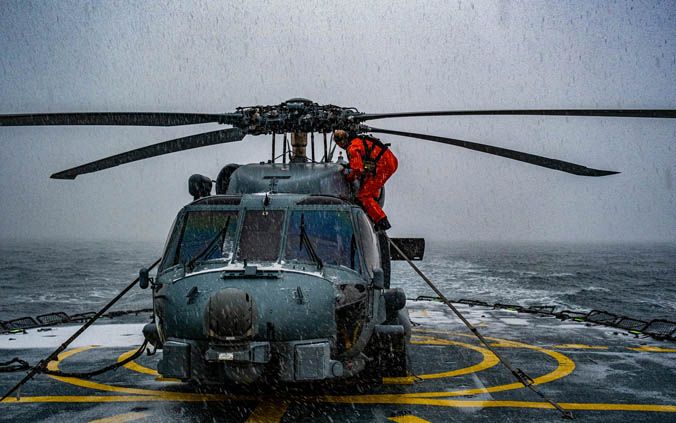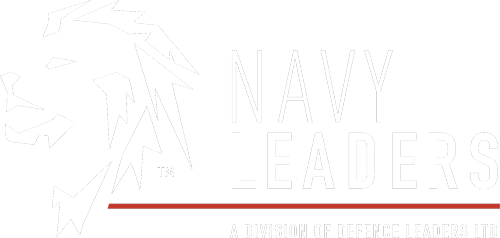Ice Ice Navy ' Patrolling Greenland on Denmark's HDMS Triton
)
The Royal Danish Navy patrols the waters around Greenland year round. A visit to the HDMS Triton reveals what life is like for the crew as they serve in this majestic – and strategically important – Arctic landscape.
Patrolling the world’s largest island
The sea is choppy. So choppy, in fact, that the lamp in the officer’s mess swings to and fro, casting light and shadows from one angle to another. Mention the rocking to one of the crew, though, and the only answer you’ll get is a knowing smile – as if to say, ”You’ll soon get used to it”.
The 55 or so crew members of the Royal Danish Navy ship HDMS Triton are well-accustomed to these rough seas. Since its launch in 1990, the ship has been a near constant presence in the waters around Greenland and the Faroe Islands, which are both autonomous territories within the Kingdom of Denmark and are therefore part of NATO territory.
The Triton serves a vital role in the defence of this highly contested and strategically important area, known as the High North, conducting patrols and returning to harbour in Denmark only for maintenance and to resupply. While not technically an icebreaker, the ship has been specially designed with a double skinned, ice-reinforced hull so that it can break through up to 80 cm of ice. It is also highly manoeuvrable, which is key when operating in Greenland’s narrow ports and waterways. The Triton patrols the west coast of Greenland, monitoring the area for rogue fishing boats or other suspicious ships and submarines, and, when possible, liaising with local communities.
This is no small task. Greenland is huge – the world’s largest island. Five times the size of Germany. Fifty times bigger than Denmark. In fact, if you lay it across Europe on a map, it stretches from Portugal to Poland. But its population is only 56,000, less than 1 per cent of the Danish population of around 5.9 million. Inhospitable, inaccessible, ice-covered, remote, it is a destination mainly reserved for cold-weather enthusiasts, scientists and intrepid explorers – and, of course, the Greenlandic Inuit people, who have lived on the vast island for thousands of years. It is also beautiful, rich in sparkling vistas, dramatic snowy valleys and ice highways that offer views overlooking icefields.
On board the Triton, the view is just as spectacular. As we depart the port of Nuuk (Greenland’s capital city), snow-covered glaciers loom on either side of the ship. The homogeneity in the landscape and the lack of identifiable features plays with your perspective – the glaciers and rolling landscapes appear both immense and forbidding yet close and accessible. As Nuuk‘s infrastructure vanishes behind us, human civilisation disappears with it.
Changes and challenges in the High North
The Triton is one of four Danish patrol vessels deployed in the region at any given time. Theships fall under the Joint Arctic Command (JACO), a Danish operational command based in Nuuk. JACO also oversees Challenger 650 patrol aircraft and the Sirius Dog Sled Patrol – an elite naval unit made up of experienced Danes who patrol the eastern coast of Greenland on dog sleds in two-year rotations.
Greenland’s vast icefields have remained virtually untouched for centuries. But that is changing. Rising air temperatures and warm ocean waters are speeding the melting of Greenland’s glaciers. As the ice melts, it opens up previously inaccessible shipping lanes, which are attracting international attention. Cruise liners are beginning to appear with more regularity. Shipping traffic is increasing.
The availability of these new Arctic routes could lead to competition between countries and jeopardise the security of the entire region. Russia maintains significant military capabilities in the Arctic, and its capability to disrupt Allied reinforcements and freedom of navigation across the North Atlantic is a strategic challenge to the Alliance. China has declared itself a “near-Arctic state” and is developing new icebreaker ships with an eye on increasing its Arctic presence. NATO is increasingly concerned by these developments. After all, five of the six countries bordering the Arctic Ocean are NATO Allies: Canada, Denmark, Iceland, Norway and the United States.
On the bridge of the ship, we’re greeted by the Captain. Commander Senior Grade Peter Krogh is a veteran of these waters and a former commander of Standing NATO Mine Countermeasures Group 1 (SNMCMG1). He is soft-spoken and often found with a cup of strong coffee in hand, but he also carries the presence and authority that his rank demands.
We join him as the ship passes through the incongruously named Disco Bay, a fjord just off the west coast of Greenland. Peter, as his crew call him (on the Triton, everyone refers to one another by their first names regardless of rank – an unusual detour from the watertight etiquette of most militaries) points out one of the few coastal communities on the land’s edge.
“In the Bay of Disco where we are now, people in Ilulissat used to visit the isle of Disco by foot, across the ice, by sledges and dogs,” he tells us. “But they haven’t been able to do that for a very long time.”
Climate change has wide-ranging impacts on the region – not just in melting ice, but in more frequent and severe storms. We’re taken to the helicopter deck, where safety crew are busy prepping the ship’s MH-60R Seahawk helicopter for a training flight. The weather is terrible. Grey clouds unleash a torrent of snow. It’s windy. Sea spray gusts over the deck, and a low-hanging mist means that visibility is low. You don’t need to be an expert to know that these are not ideal flying conditions.
The two pilots perform the final checks before stepping into the helicopter, starting the engines and slowly levitating out over the rough seas. Familiarising themselves with these conditions is vital for the pilots, who need to be able to fly maritime security missions, personnel and cargo transfers, and search and rescue operations.

Life on board the Triton
In the evening, the crew hosts a small social gathering. Officers, NCOs and conscripts mingle together in the area on the ship known as ”the bar”. Drinks are topped up with ice harvested from the surrounding ocean (apparently, ice that appears black as it floats on the surface is among the purest on Earth). As guests on board, we are taught sea shanties and old dice games passed down from one seafaring generation to the next.
The Royal Danish Navy practises a culture of informality and inclusivity, cultivating a relaxed, familiar atmosphere on board. When you spend six weeks at sea in some of the most isolated waters in the world, this is essential for keeping up morale and building camaraderie.
A tiny vessel in a vast sea
The next day, before we disembark, some of the ship’s crew take us out into the surrounding ocean on a small boat. As we slowly pull away from the Triton’s hull and into the waters beyond, icebergs the size of buildings saunter past, each one a different size and shape, and all more than tens of thousands of years old. Even the Triton, in all its 112-metre glory, is dwarfed by the passing ice. It is a humbling, awe-inspiring experience.
The Royal Danish Navy has operated in Greenland’s waters since 1605, when the first three naval units were deployed by King Christian IV. Over the centuries, Danish forces have adapted their procedures and equipment, becoming expert operators in the Arctic maritime environment. That experience has been extremely valuable to share with NATO Allies – and it will prove even more vital as climate change causes the High North to become more accessible, continuing to transform the Arctic in the decades and centuries to come.
